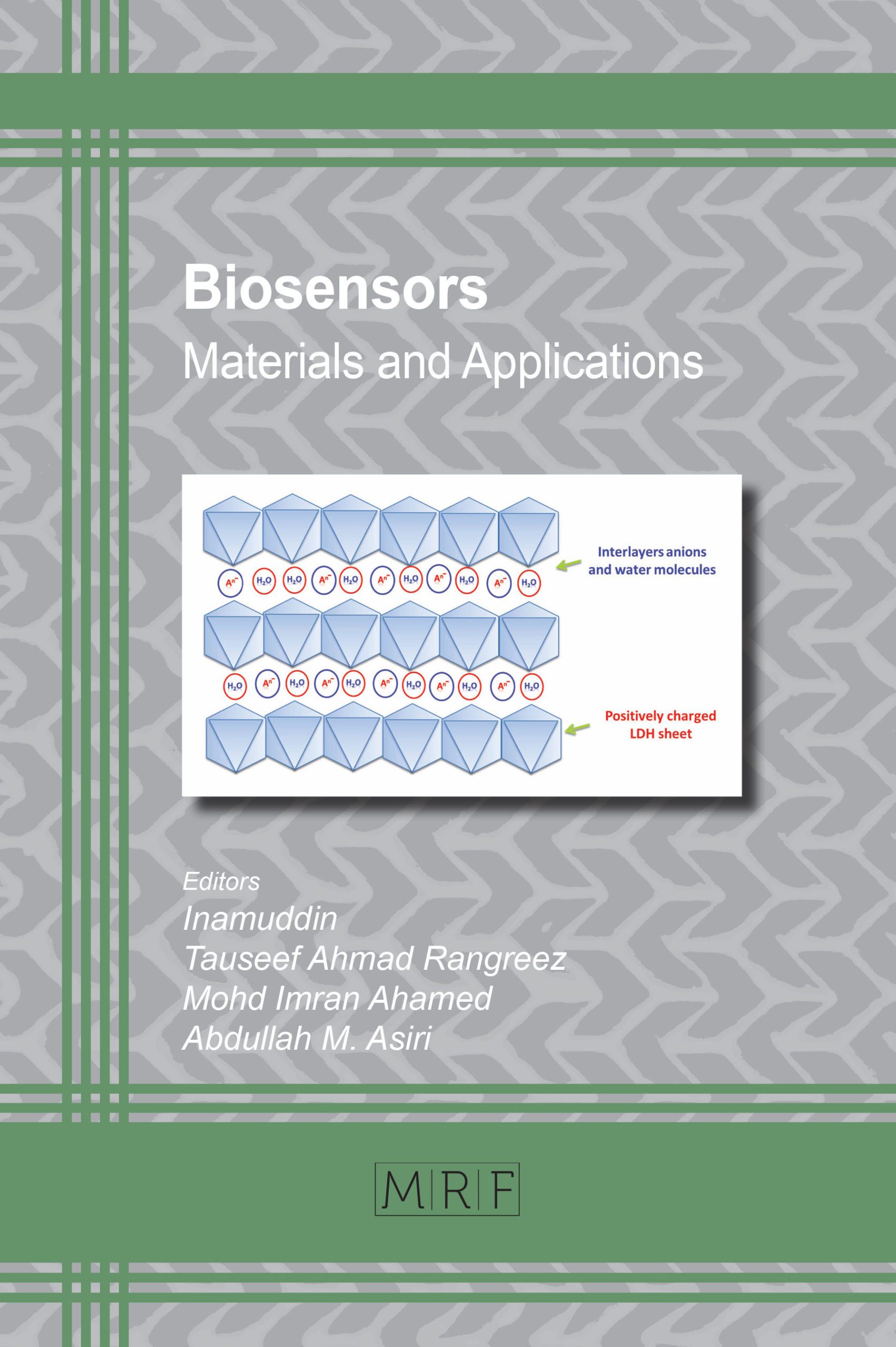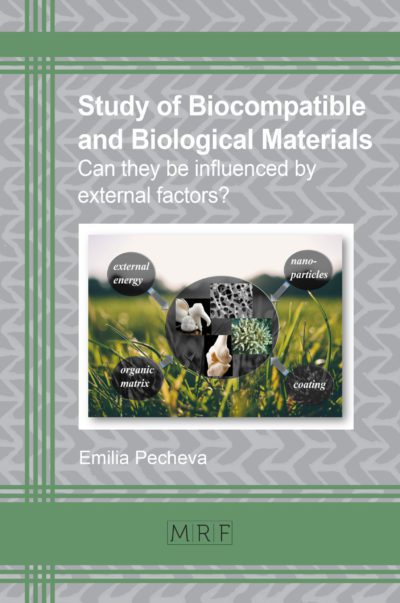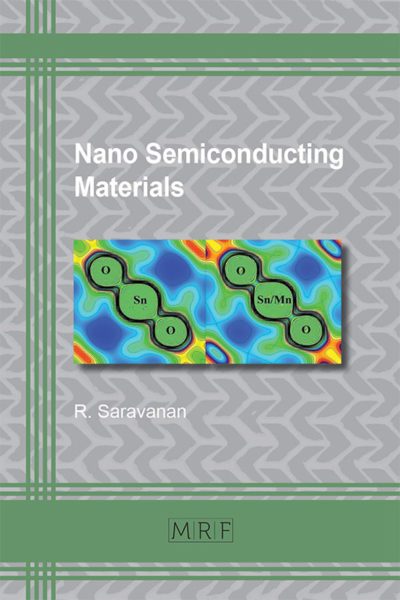Biosensors – Materials and Applications
Eds. Inamuddin, Tauseef Ahmad Rangreez, Mohd Imran Ahamed, Abdullah M. Asiri
Materials Research Foundations Vol. 47
Publication Date 2019, 326 Pages
Print ISBN 978-1-64490-012-3 (2019)
ePDF ISBN 978-1-64490-013-0
DOI: 10.21741/9781644900130
This book presents recent developments in the field of biosensors and their applications in healthcare. Topics include aptasensors for the detection of environmental contaminants, disease-causing pathogens, molecularly imprinted polymers for the detection of genetic materials, infectious diseases, in vivo monitoring of key molecules, functional nanoparticles targeted to specific tumor cells for detection as well as imaging.
Keywords
Biosensors, Environmental Contaminants, Disease-causing Pathogens, Genetic Material, Tumor Cells, Cancer, Infectious Diseases, Monitoring Molecules in vivo, Aptasensors, Molecularly Imprinted Polymers, Biomarkers, Nanobiosensors, Theranostics, Bio-recognition, DNA Biosensors, Hydroxide Based Biosensors, Nanoparticles Combating Infections. Healthcare
Google Preview
Table of Contents
Applications of Aptasensors in Health Care
Abhijeet Dhiman, Harleen Kaur, Chanchal Kumar, Yusra Ahmad, Tarun Kumar Sharma
Applications of Molecularly Imprinted Polymers to Genobiosensors
Mayank Garg, Satish Pandey, Vijay Kumar Meena, Amit L. Sharma, Suman Singh
Application of Functional Metal Nanoparticles for Biomarker Detection
Goutam Ghosh
Layered double Hydroxide Based Biosensors
Nadeem Baig, Azeem Rana
Electrochemical Nanobiosensors for Cancer Diagnosis
Anu Bharti, Shilpa Rana, Nirmal Prabhakar
Role of Nanoparticles in Combating Infections
Kanwal Rehman, Muhammad Sajid Hamid Akash
Theranostic Application of Nanoparticulated System: Present and Future Prospects
Rout George Kerry, Sabuj Sahoo, Gitishree Das, Jayanta Kumar Patra
Enzymatic Biosensor for in vivo Applications
Pedro Salazar, Miriam Martín, José Luis González–Mora
https://en.wikipedia.org/wiki/Biosensor














